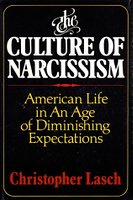It started innocuously enough: tiktok user @h.mourland asked why boomers hoarded knowledge, as his own experience with his father suggested that they were unwilling to pass on the knowledge that they had. The discussion brought up some relevant points: that they treat it as a scarce resource, they do so to maintain power and control, and so forth. But I wonder if there is a simpler reason, Occam’s razor being what it is: perhaps the boomers don’t know.
That is, they’re not necessarily aware that they’re hoarding the knowledge. (Now of course, in some cases certain individuals most certainly are hoarding knowledge, but we want to caution against generalizing based on anecdotal cases, about universalizing the particular.) Teaching is hard, and “they know more than they can tell”, as Michael Polanyi commented about the difficulties of transferring tacit knowledge back in the 20th century. The boomers may be guilty of making the assumption that you’ll figure it out the same way they did, either through formal instruction or trial-and-error experimentation. Their reticence to share knowledge may come from other sources: alienation and shame. But we’ll get to that in a moment; first, a comment on instruction.

I like to call it the Wayne Gretzky Effect, that idea that it can be difficult to teach what is understood intuitively. During his 20 seasons as a player in the NHL, Gretzky amassed an incredible record of achievements, including being the all time leader in goals, assists, and points, and (such as?). After his career, he became a co-owner of the then expansion Phoenix Coyotes, and in 2005 he took over as head coach. His record there was 143-161-24, missing the playoffs each year and only once having a “winning” season (in 2007-08). He stepped down as head coach as the Coyotes went into bankruptcy following the end of the 2009 season. The intuitive understanding possessed by hockey’s GOAT didn’t necessarily translate into behind-the-bench success.
Conversely, a look at the playing careers of many HOF coaches, both in and outside of hockey, will show that an average player may make a great coach: a lot of third-line players who spent some time on the bench turned into great coaches. John Madden played some college football and was a practice squad player in the NFL before becoming one of the greatest coaches NFL history, and he took that knowledge into his role as a TV analyst. Scotty Bowman only played junior hockey before moving on to become the winning-est coach in NHL history. Current NY Islanders coach Barry Trotz is 3rd all time in wins, but had a limited career as a defenceman in the minor leagues. There’s a host of other examples as well.
This isn’t to say that Wayne Gretzky didn’t work at being a coach; far from it. Just the knowledge that one may have about their field does not translate into being able to effectively explain that. (There’s a host of other factors too; hockey is an incredibly fast moving and complex game with a lot of moving parts, in addition to off-ice elements beyond the coaches control).
But teaching can be just as challenging as learning; that shift to a role in education has been one of the most difficult I’ve faced personally over the last decade. [more]
And there’s a secret that I need to tell you. Come closer. Can you hear me? Good. Here it is: I don’t know everything. And that’s okay. Granted, I do know some things very, very well, but it took me a long time to admit that I didn’t know things. After many years of self-reflection (and learning how much I don’t know), I’m not ashamed to admit that I don’t know something. And that’s one of the elements that is connected to a reticence to share knowledge: shame. The boomers have been told they’re masters of their domain, and it can be a challenge to their identity or self-image to admit that they’re not. They have become fallible, with feet of clay. To be questioned, and to be found wanting, is crushing – better to not admit it at all.

And this ends up manifesting in a lack of engagement, a lack of willingness to pass on the information. This can be summed up as a profound sense of alienation. What does this mean? Simply put, estrangement; that separation that we feel between us and everything else around us. Depending on your perspective, this is either directly caused by or a by-product of things like capitalism or industrialization.
A couple examples of this separation include work, where you may be only doing one job that’s part of a larger whole and you never see the final results. Or separation from our materials, like our removal from the process of delivering food to our table, and getting bright-red beef wrapped in cellophane. Or separated from each other, moving out to single family dwellings in suburbia (cue up Rush’s Subdivisions on your mix tape and head down to the arcade). Or just separated from the natural world as a whole. This is drawing mostly from Bertell Ollman’s Alienation (1976). The boomers – post WWII – may have experienced the largest process of this alienation in history.
A big part of this was the change in material living conditions that occurred in the United States. The shift to the suburbs, as GIs returned home, and spread further across the country, disrupting the prior social life that had existed. Robert Putnam covers a lot of this social malaise in Bowling Alone (2000), where he figures suburbanization and increased commuting time accounted for about 10% of the overall reduction in civic engagement (with things like generational attitudes, double income families, increased use of personal mass media (TV and phone)), and others). As above, the decline in civic life is more like a byproduct of the commodification of everything that occurs under capitalism. There’s no one cause; there’s just a lot of factors.
It’s a complex problem.

But this discussion here isn’t about condemning anybody – it’s about understanding. Whether we’re talking about alienation, suburbanization, knowledge transfer or commodification, all these things are about trying to understand what’s going on. There’s one more element to bring in: the underlying ideology of the boomer generation. In the late 70s Christopher Lasch wrote The Culture of Narcissism. While at the time of it’s release he was talking about the current generation (the boomers), and the self-centered-ness of American society at the time, the causes for those attitudes went back much further, all the way to the 19th century and the Gilded Age. This ideology wasn’t tied to any one particular generation. Certain events can have repercussions that echo down through history and affect us much, much later.